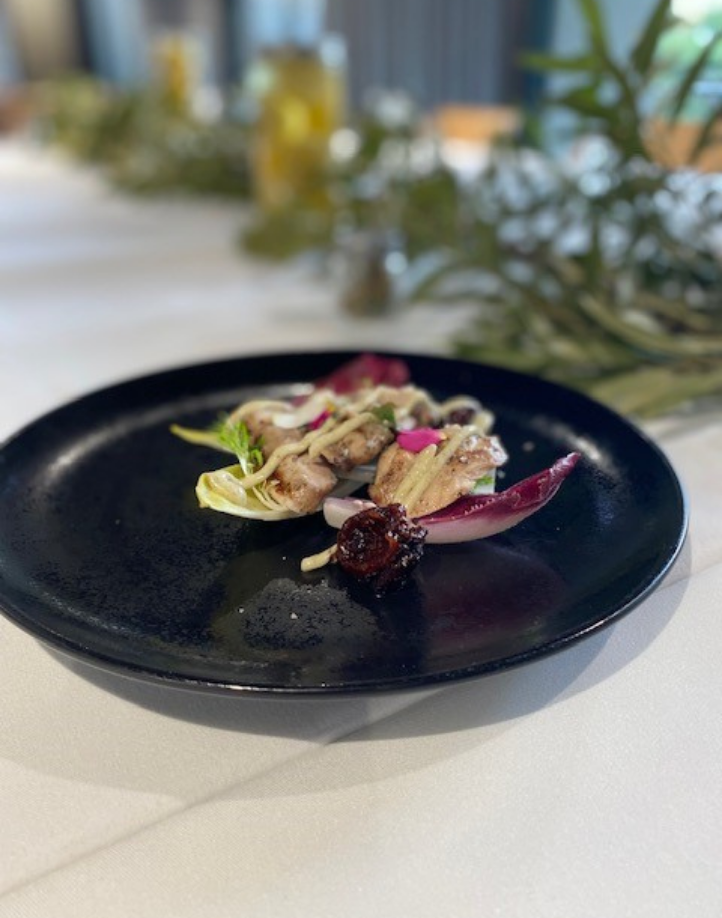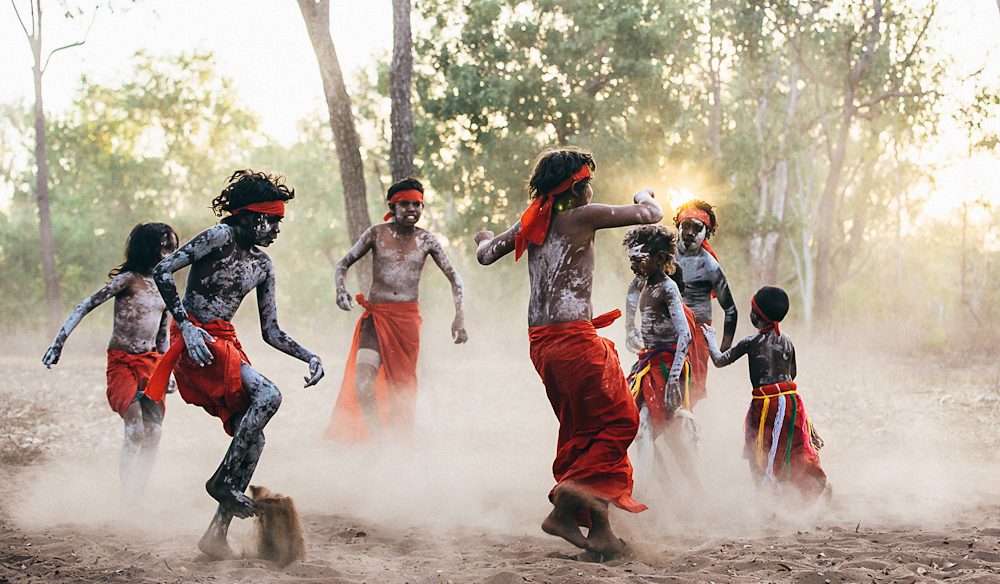A Journey Through Flavour: Exploring the World of Aboriginal Cooking
A Journey Through Flavour: Exploring the World of Aboriginal Cooking

For centuries, Aboriginal Australians have cultivated a deep connection with their land, drawing sustenance and inspiration from the natural world. This connection is reflected in their culinary traditions, where the focus is on using fresh, local ingredients and cooking methods that are both sustainable and delicious.
Beyond the Bush Tucker:
Related Articles: A Journey Through Flavour: Exploring the World of Aboriginal Cooking
- Unveiling The Timeless Tapestry: Exploring The Aboriginal Dreamtime Ancestors
- The Aboriginal Flag: A Symbol Of Resilience, Strength, And The Earth’s Lifeblood
- The Aquatic Rat: Myth Or Misunderstood Marvel?
- Buzzing With Concern: The Urgent Need For Australian Bee Conservation
- Unraveling The Mystery: The Meaning Of "Tuppy" – A Journey Into Aboriginal Naming Traditions
Often, the term "Aboriginal cooking" conjures up images of bush tucker – the diverse array of native plants, animals, and insects found in the Australian landscape. While bush tucker plays a vital role in Aboriginal cuisine, it’s only one piece of the puzzle.
A Tapestry of Traditions:
Aboriginal cooking is not a monolithic entity. It’s a tapestry woven from the diverse traditions of over 250 distinct Aboriginal nations, each with their unique culinary practices, ingredients, and cooking techniques. This diversity is reflected in the countless ways Aboriginal people prepare food, from smoking and roasting to grinding and pounding.
Respect for the Land and its Bounty:
At the heart of Aboriginal cooking lies a profound respect for the land and its bounty. This respect is evident in the sustainable harvesting practices employed by Aboriginal people, ensuring that the land remains healthy and productive for generations to come.
Bush Tucker: A Culinary Treasure Trove:
Bush tucker offers a wealth of flavours and textures, from the sweet, juicy berries of the quandong to the earthy, nutty flavour of the macadamia nut. Other popular bush tucker ingredients include:
- Witchetty grubs: These large, creamy grubs are a high-protein delicacy, often roasted or eaten raw.
- Kangaroo: A lean and gamey meat, kangaroo is often grilled, smoked, or roasted.
- Emu: A rich and flavorful meat, emu is often roasted or stewed.
- Saltbush: This hardy plant adds a unique, salty flavour to dishes.
- Warrigal greens: These leafy greens are a good source of vitamins and minerals, often cooked in soups or stews.


Beyond the Bush:
While bush tucker is a vital part of Aboriginal cuisine, it’s not the only ingredient used. Aboriginal people also incorporate a wide range of other ingredients, including:
- Seafood: From fresh oysters and abalone to succulent prawns and fish, the Australian coast offers a bounty of seafood.
- Meat: Aboriginal people have traditionally hunted and gathered a variety of animals, including wild pigs, goats, and rabbits.
- Fruits and vegetables: A variety of fruits and vegetables are grown in Aboriginal communities, including bananas, mangoes, pumpkins, and sweet potatoes.

Traditional Cooking Techniques:
Aboriginal cooking techniques are as diverse as the ingredients used. Here are some of the most common methods:
- Smoking: This method is used to preserve and flavour meat, fish, and vegetables.
- Roasting: Food is often roasted in hot ashes or over an open fire.
- Boiling: Water is used to cook a variety of foods, including vegetables, meats, and fish.
- Grinding: Nuts, seeds, and grains are ground into flour using traditional methods.
- Pounding: This technique is used to soften and prepare food for consumption.
Modern Interpretations:
In recent years, there has been a growing interest in Aboriginal cuisine, with chefs and restaurants across Australia incorporating traditional ingredients and cooking techniques into their menus. This renewed interest has helped to raise awareness of the rich culinary heritage of Aboriginal Australia and to promote the use of sustainable and ethical food practices.
The Importance of Cultural Sensitivity:
When exploring Aboriginal cuisine, it’s important to approach it with respect and cultural sensitivity. Avoid appropriating traditional knowledge and practices without proper understanding and permission.
Where to Experience Aboriginal Cuisine:
There are many ways to experience Aboriginal cuisine:
- Visit Aboriginal-owned restaurants and cafes: Many Aboriginal-owned businesses offer authentic and delicious dishes.
- Attend Aboriginal cultural events: These events often feature traditional food demonstrations and tastings.
- Take a bush tucker tour: Guided tours offer the opportunity to learn about native plants and animals and to sample traditional bush tucker.
- Cook at home: There are many Aboriginal cookbooks and online resources available that provide recipes and information on traditional cooking techniques.
A Culinary Legacy for the Future:
Aboriginal cooking is a testament to the ingenuity and resilience of Aboriginal people. It’s a culinary tradition that has been passed down through generations, adapting to the changing environment and embracing new influences while remaining true to its core values of respect for the land and its bounty.
FAQs:
Q: What is bush tucker?
A: Bush tucker refers to the wide variety of native plants, animals, and insects found in the Australian landscape that are used for food.
Q: Is bush tucker safe to eat?
A: Many bush tucker species are safe to eat, but it’s important to identify them correctly and to be aware of any potential toxins or allergens.
Q: Where can I learn more about Aboriginal cooking?
A: There are many resources available, including cookbooks, online articles, and documentaries. You can also visit Aboriginal-owned restaurants and cafes, attend cultural events, or take a bush tucker tour.
Q: How can I support Aboriginal cuisine?
A: You can support Aboriginal cuisine by patronizing Aboriginal-owned businesses, attending cultural events, and learning about traditional food practices. You can also choose to incorporate bush tucker and other Aboriginal ingredients into your own cooking.
Conclusion:
Aboriginal cooking is a vibrant and delicious expression of the deep connection between Aboriginal people and their land. It’s a tradition that offers a unique culinary experience and a valuable insight into the rich cultural heritage of Australia’s First Peoples. As we continue to explore and celebrate Aboriginal cuisine, we can learn from its sustainable practices, embrace its diverse flavors, and contribute to its continued legacy for generations to come.

Closure
Thus, we hope this article has provided valuable insights into A Journey Through Flavour: Exploring the World of Aboriginal Cooking. We thank you for taking the time to read this article. See you in our next article!


